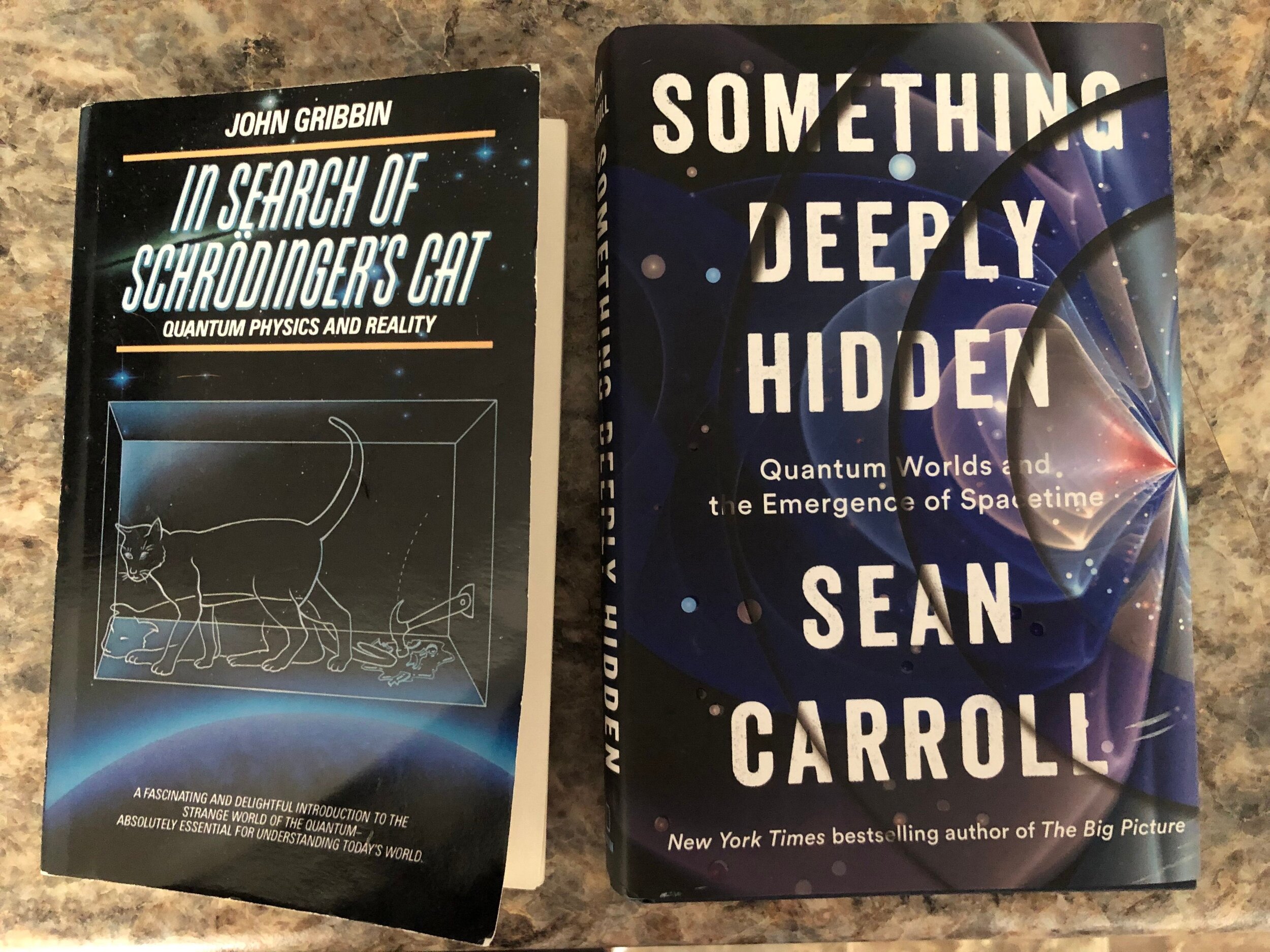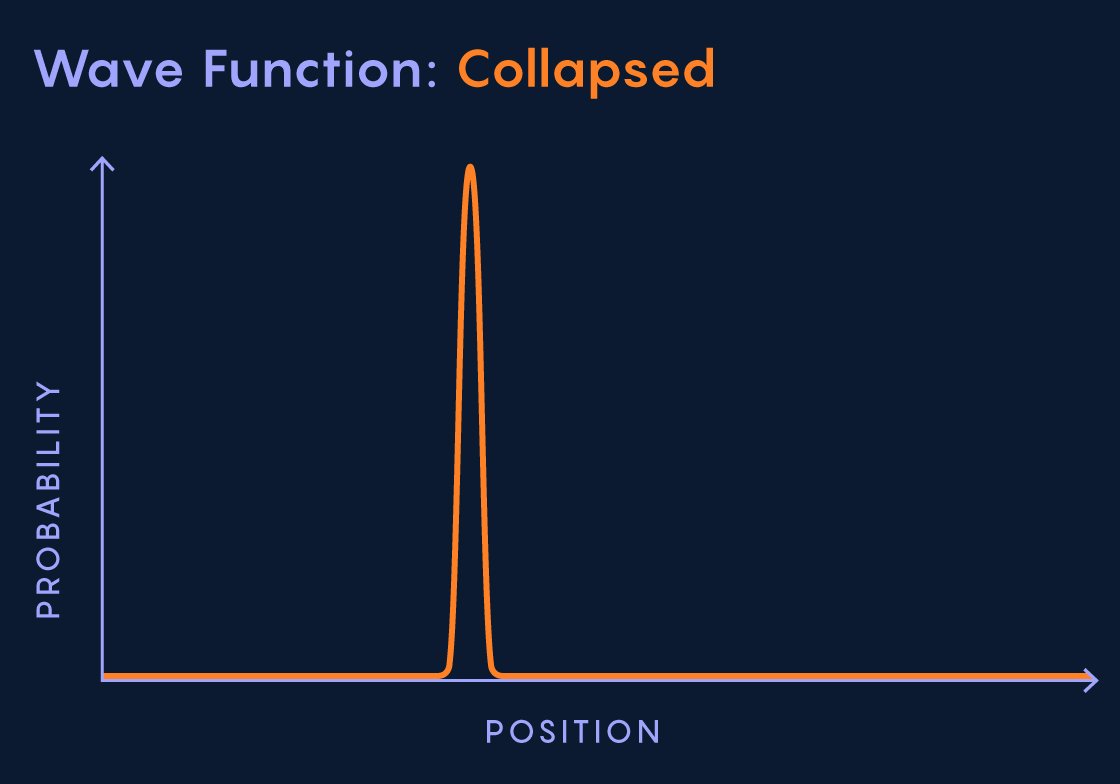Reflections on the mysteries of quantum physics
Most of us have probably heard tell of the mysterious world of quantum mechanics (or worlds, more on that later), and it’s quite easy to just throw up your hands and give up trying to understand anything. Cats are both alive and dead, particles are also waves, particles across the universe from each other can be entangled with each other, and what’s more, the world may be splitting into many versions of itself pretty much all the time. What?
Incredulity and wonder are certainly reasonable responses when confronted with such ideas. Regardless of how you feel about the ideas of quantum mechanics, though, it’s indisputable that this branch of physics models our reality with utmost precision. The tools of quantum mechanics, epitomized by the Schrodinger equation which describes the evolution of quantum systems in time, underlie the development of electronic devices we use everyday and give us a new understanding of chemistry and life itself. Often, scientists who use quantum mechanics try to suppress any concerns about what this seemingly bizarre model of the universe actually means, in other words, just “shut up and calculate”. As Sean Carroll says in the opening to his fabulous book, Something Deeply Hidden, “You don’t need a PhD in theoretical physics to be afraid of quantum mechanics. But it doesn’t hurt.”
Now, I am not a theoretical physicist, and I’m certainly not qualified to talk about the issues of quantum mechanics in any detail. But after reading two fabulous books (at the popular science level) about quantum mechanics, I wanted to take some time to reflect about what I’ve learned. Sean Carroll’s book mentioned above (Something Deeply Hidden) gave me a unique look at how professional physicists think about interpreting quantum mechanics. His book, which came out in 2019, was an interesting companion to an older summary of quantum physics I read as a part of a science book club I participate in, In Search of Schrodinger’s Cat, a popular treatise to the history of quantum mechanics written by physicist John Gribbin in 1984.
The time gap between these books is certainly considerable, and yet the basic concepts in quantum mechanics really haven’t changed (in fact, those were mostly in place by 1930). The applications of quantum mechanics have certainly expanded considerably. Gribbin explains the importance of the quantum in the world of electronics, and even touches on its potential in computing. Of course, computing has been through quite a lot since 1984, and while we are able to do quantum computing on some level, it still hasn’t been turned into a practical tool (more on that from a recent episode from Sean Carroll’s podcast, Mindscape). As far as the actual “interpretation of quantum mechanics”, it seems there hasn’t been an incredible amount of movement, which happens to be one of the points of Carroll’s book.
Perhaps I should clarify what’s meant by “interpretations of quantum mechanics”. To be honest, if you really want to get an idea of this, you should read Something Deeply Hidden, but I’ll try to give you a quick taste. Let’s consider a single electron which has a property referred to as “spin”. When measured, the electron will either be “spin up” or “spin down”. However, quantum mechanics tells us that the unobserved electron is best described as a mixture, or “superposition”, of spin up and spin down. We think of an electron as a definite particle with a certain state, but we know from over a century of science that it’s best described as more of a wave-y entity. So, if the particle isn’t really in a definite spin state, why do we only measure spin up or spin down? That’s the essence of what’s known as “the measurement problem” in quantum mechanics.
In general, until observed, the wave function will be spread out over a range of possibilities. After measurement, it looks like it collapses… Source: Quanta Magazine quantamagazine.org/what-is-a-particle-20201112/
Traditionally, and in most quantum mechanics instruction to the day, we’re told to describe the process of measurement as the “collapse of a wavefunction”. The wave function is what describes the state of the electron as a mixture of spin up and spin down, and when measured, it looks like the wave function decides on a particular state. Indeed, I took one modern physics class in undergrad, and that’s how we were taught to think of it. The problem is that it’s hard to say exactly what it means to “measure” a particle, and we don’t have a good idea about what actually causes the wave function to collapse, we just know it does. In any case, this in one way to “interpret” quantum mechanics, which is known as the “Copenhagen interpretation”. In general, we can consider examples other than spin measurements, such as location measurements, as depicted in the gif here (from Quanta Magazine), and the same sort of phenomenon occurs, initially the system is in some mixture of states, but when observed, it seems to collapse on one certain location.
We can also think about the spin measurement experiment in another way. When measuring the electron, the world splits into two copies of itself, one where you measure “spin up”, the other where you measure “spin down”. So now there are two of you, living on different “branches” of the wave function. You can’t interact with each other in any way, but in a real sense, each of these people are you. That idea is mind-blowing, and it’s known as the “many worlds interpretation” of quantum mechanics. It was proposed by Hugh Everett, a physics PhD student in the 1970s, and Gribbin gives it some time towards the end of his book, while Carroll really writes his whole book from this view of quantum mechanics. I’m a big fan of this, and I’m convinced it’s a much better description of what’s happening in quantum physics, but I’ll admit that it certainly seems unsettling that the world is constantly branching and there are an incomprehensible number of “me’s” roaming about… But, as Sean Carroll impresses in his book, if you take the math of quantum mechanics (the Schrodinger equation) at face value, this is the view of the world we are left with.
So that’s just a little taste of what you start to encounter when exploring quantum mechanics. Strange and bizarre? Maybe. But also incredibly accurate, a triumph of modern science.
It can be tempting to guess that there might be some sort of spiritual about quantum mechanics, or at least something related to the human mind and consciousness. But this discussion is often not thought through very much; I’ve read several spiritual or religious books that appeal to quantum mechanics as an example where there is a fundamental mystery not explained well by science, and perhaps there’s room there for God or something else mystical. However, it’s practically the opposite - this mystery is explained perfectly well by science, at least for any objects and interactions we experience in everyday life (maybe not at the Big Bang or in black holes, that is). Just because these findings are surprising or unexpected doesn’t mean they are inexplicable. It certainly seems mysterious and unsettling that we cannot predict exactly what state a system will be in (e.g., will we measure spin up or spin down?), but that doesn’t leave room for the spiritual unless we have a really good reason to think so.
Related to this, it seems like quantum physics is telling us that the world is not deterministic, that is, the future is not perfectly determined by the current state of the universe. When I first came across this, I wondered if this maybe at least gave some room for free will. However, we must remember that even if the universe is not deterministic, we don’t determine the outcome of quantum measurements. If the world isn’t deterministic, this by no means implies we have free will, we would have to connect our “will” to the quantum measurement problem somehow, and there’s absolutely no evidence of this. In fact, most of the behavior of the neurons in our brain seems to be explained quite well using classical physics, quantum effects are really only important for smaller systems of particles (although there are some fascinating theories about a possible role for quantum mechanics in the brain). Furthermore, if we adopt the many worlds interpretation mentioned above, everything still evolves deterministically. If we had enough information, we could perfectly predict how everything will change over time, and these predictions would include the universe constantly splitting into many worlds.
Now, all of this could seem a bit disappointing. After all, spirituality and free will are exciting, and in quantum mechanics, there seems to be little room for them. But I still believe there are ways to talk about these topics without trying to insert them into the fundamental laws of physics. When we zoom out to the level of human beings acting in the world, it certainly makes sense to believe in free will in a real sense (more on that in a future post, perhaps). And in closing, I want to emphasize that the lessons we learn in quantum mechanics are exciting in their own right! There’s no need to add in extra pieces to make this world beautiful, the beauty is already there, in what we find in the physical world. As one of my favorite authors, Douglas Adams, put it, “Isn't it enough to see that a garden is beautiful without having to believe that there are fairies at the bottom of it too?”

